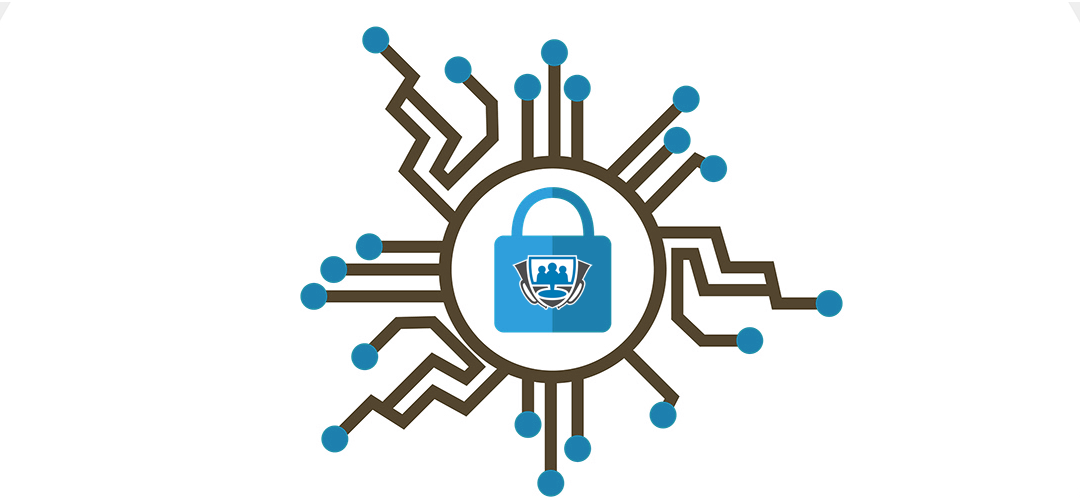Data security is a big deal, and as you may have seen recently in the news, it’s a big deal that just keeps getting bigger. The most startling fact is that attacks are more common in the small business arena than in any other. That’s because small businesses typically don’t have the hefty infrastructure and layered security that larger corporations do, so they’re easier targets. Attackers are now wise to the fact that getting a ransom or banking information from a handful of small companies is quicker and easier than working on one big pay day. This means that data security has to be the top technological priority to keep your bottom line, reputation, and operations safe.
Learn to Walk Before You Run
Regardless of your industry, the data you keep on your local servers or in the cloud—such as your customer data or your internal financial data—is the most valuable asset you have. You rely on it when making critical business decisions, pursuing leads, and improving your customer experience.
Since your data is vitally important, you must take the necessary steps to protect it from data security threats such as malware, hacking, and malicious insiders. But where do you start?
You could, of course, study data protection laws and regulations, such as General Data Protection Regulation (GDPR), Payment Card Industry Data Security Standard (PCI DSS), or California Consumer Privacy Act (CCPA), but that would be like learning to fly the airplane by piloting a Boeing 737 full of passengers. Instead, start with general concepts and get the basics right before you move up the data security ladder and address specific requirements.
Understanding Fundamental Data Security Concepts
IBM defines the term data security as “the practice of protecting digital information from unauthorized access, corruption, or theft throughout its entire lifecycle.” This practice revolves around three fundamental concepts:
- Confidentiality: Keep data from falling into the wrong hands by actively preventing unauthorized access.
- Integrity: Ensure that data cannot be modified or deleted without authorization.
- Availability: Maintain data availability at a required level of performance in all kinds of situations.
These three fundamental concepts are commonly referred to as the “CIA triad,” and they should guide the choice of appropriate controls and policies when creating a comprehensive data security strategy that incorporates people, processes, and technologies.
Top 3 Basic Data Security Requirements
Now that we’ve discussed the fundamental data security concepts, we can take a close look at three basic data security requirements based on them.
1. Use Strong Authentication to Maintain Confidentiality
Because sophisticated cyber-attacks involving zero-day exploits (methods hackers use to attack systems with a previously unidentified vulnerability) make for attractive headlines, it’s easy to get the impression that most cyber-attacks involve highly skilled hackers using state-of-the-art techniques to get inside protected systems. But that’s not the reality. The Verizon 2021 Data Breach Investigations Report attributes 61 percent of breaches attributed to stolen or weak credentials. Basically, no one was “hacked” in the technical sense. They were more likely social engineering or phishing attacks.
To guard against these and other more insidious methods, you must require all employees to use strong, unique passwords (12345, names of pets, and dates of birth just don’t cut it) and pair them with at least one more authentication factor, such as a PIN code, biometric data, or a security token.
2. Implement a Least Privilege Model to Protect Data Integrity
Using strong authentication mechanisms isn’t enough to protect your data from being modified or deleted without authorization. Why? Because attacks don’t come only from outside—they may also come from inside your organization. In fact, analysts predict that the so-called insider data breaches will increase by 8 percent in 2021 due to the explosion of remote work arrangements and the increased reliance on cloud services. A compromised employee that’s authorized to access and modify data across the entire organization is a huge data security threat.
To address this threat, you should implement a ‘least privilege model’ and always give employees the least amount of privileges necessary for them to complete their work.
3. Back Up All Important Data to Maintain Its Availability
There are many different events that may cause your data to become unavailable, from unpredictable natural disasters to targeted malware attacks to unfortunate employee errors. While you will not always be able to reliably prevent these events from happening, you can always maintain data availability by regularly backing your data up to a safe location or, even better, multiple locations.
We always recommend that small businesses follow a tried-and-test data backup strategy, such as the 3-2-1 rule, which states that you should create three copies of your data, store them in at least two separate storage types, and keep one copy at an offsite location. Best of all, you can satisfy these requirements just by combining cloud backups with local backups—something many small businesses are already doing.
Let Us Help You Achieve Enterprise-Grade Data Security
At Help Desk Cavalry, security is our first priority because we know first-hand just how high the cost of its neglect can be. We also know that it’s one thing to understand the fundamental data security concepts described in this article, and it’s something else entirely to meet data security requirements while focusing on business operations and customers. That’s why more and more local small businesses are turning to our Managed Services plan which provides enterprise-grade data security as well as all other services you expect from a full-scale IT department. And all for less than the cost of a single employee’s salary. Contact us for more information.

